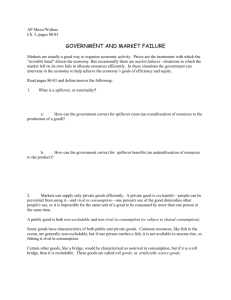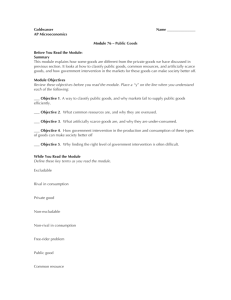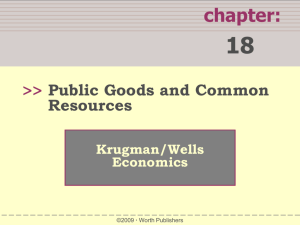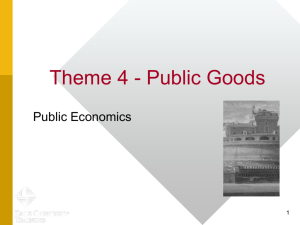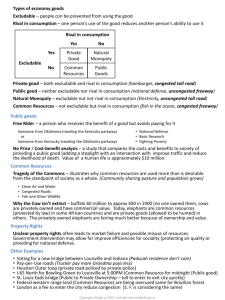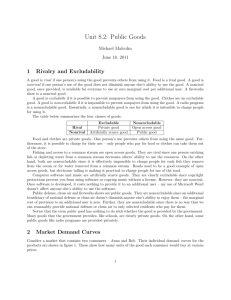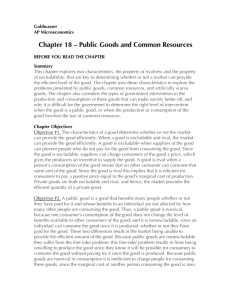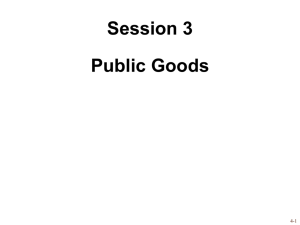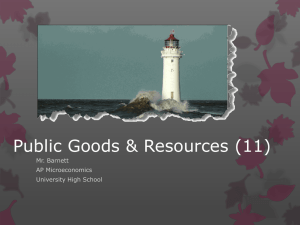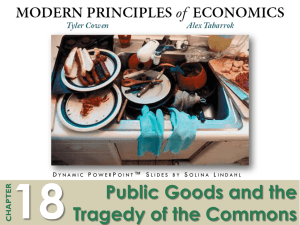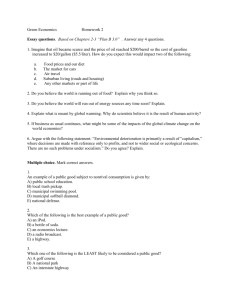PRIVATE GOODS AND PUBLIC GOODS
advertisement
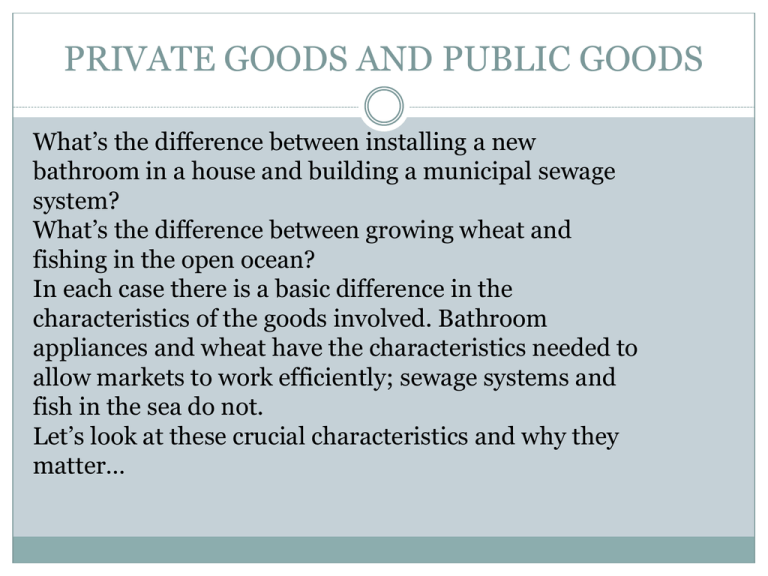
PRIVATE GOODS AND PUBLIC GOODS What’s the difference between installing a new bathroom in a house and building a municipal sewage system? What’s the difference between growing wheat and fishing in the open ocean? In each case there is a basic difference in the characteristics of the goods involved. Bathroom appliances and wheat have the characteristics needed to allow markets to work efficiently; sewage systems and fish in the sea do not. Let’s look at these crucial characteristics and why they matter… TERMS Private goods, which are excludable and rival in consumption, like wheat Public goods, which are nonexcludable and nonrival in consumption, like a public sewer system Common resources, which are nonexcludable but rival in consumption, like clean water in a river Artificially scarce goods, which are excludable but non-rival in consumption, like pay-per-view movies on cable TV. CHARACTERISTICS OF GOODS Goods can be classified according to two attributes: whether they are excludable and whether they are rival in consumption A good is excludable if the supplier of that good can prevent people who do not pay from consuming it. A good is rival in consumption if the same unit of the good cannot be consumed by more than one person at the same time. WHY MARKETS CAN SUPPLY ONLY PRIVATE GOODS EFFICIENTLY Goods that are both excludable and rival in consumption are private goods. Private goods can be efficiently produced and consumed in a competitive market. When goods are nonexcludable, there is a free-rider problem: consumers will not pay producers, leading to inefficiently low production. When goods are nonrival in consumption, the efficient price for consumption is zero. But if a positive price is charged to compensate producers for the cost of production, the result is inefficiently low consumption. COMMON RESOURCES A common resource is nonexcludable and rival in consumption: you can’t stop me from consuming the good, and more consumption by me means less of the good available for you. Some examples of common resources are clean air and water as well as the diversity of animal and plant species on the planet (biodiversity). In each of these cases the fact that the good, though rival in consumption, is nonexcludable poses a serious problem. THE PROBLEM OF OVERUSE Common resources left to the free market suffer from overuse: a user depletes the amount of the common resource available to others but does not take this cost into account when deciding how much to use the common resource. In the case of a common resource, the marginal social cost of my use of that resource is higher than my individual marginal cost, the cost to me of using an additional unit of the good. THE EFFICIENT USE AND MAINTENANCE OF A COMMON RESOURCE To ensure efficient use of a common resource, society must find a way of getting individual users of the resource to take into account the costs they impose on other users. Like negative externalities, a common resource can be efficiently managed: by Pigouvian taxes (tax or otherwise regulate the use of the common resource) by making it excludable and assigning property rights, or by the creation of a system of tradable licenses for the right to use the common resource. ARTIFICIALLY SCARCE GOODS An artificially scarce good is excludable but nonrival in consumption. Because the good is nonrival in consumption, the efficient price to consumers is zero. However, because it is excludable, sellers charge a positive price, which leads to inefficiently low consumption. It is made artificially scarce because producers charge a positive price but the marginal cost of allowing one more person to consume the good is zero. The problems of artificially scarce goods are similar to those posed by a natural monopoly.
